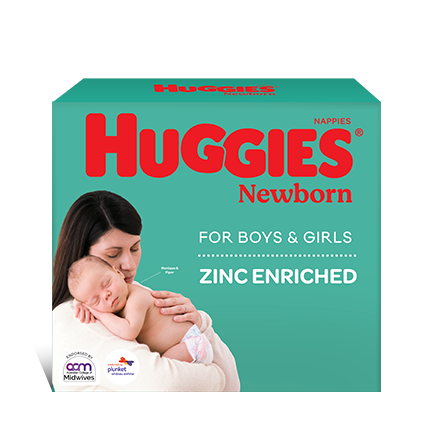Measuring your body’s temperature on a regular basis may help you to know when you are about to ovulate. Usually there is a drop in temperature just before ovulation and a sudden rise afterwards. But knowing this is what happens and doing something about it are two different things entirely. Keeping a recording of your daily temperature and charting it, then interpreting the measurements into meaningful information, takes a certain level of commitment and motivation. Though for women who are trying to conceive (ttc) and keen to do everything they can to maximise their chances of having a baby, then it’s probably not such a big deal.
What exactly is a basal body temperature?
This is the lowest measurement of the body’s temperature when it is taken first thing in the morning after rest. It is a baseline which is then used to compare any rise or fall over the course of each month. In order to be effective, a woman needs to take her temperature before she even gets out of bed and when she has been asleep for at least four hours and preferably more.
It is important for her to take her temperature before eating, drinking or going to the bathroom and before any sexual activity – all of which raise the heart rate and in turn, the body temperature from its baseline level.
By taking and recording the temperature level every morning over a period of months, a pattern can often be seen. Being able to predict when ovulation is just about to occur and therefore when the woman is most likely to be fertile can be useful for couples who are trying to conceive.
Will just a normal thermometer do?
A digital thermometer can be easier to read than a mercury one and it’s important to have a thermometer which measures in Celsius readings rather than Fahrenheit. Specially designed basal body temperature thermometers are available from pharmacies for around $20. In terms of accuracy (which is critical when measuring basal body temperature) it is worthwhile buying a new thermometer. Basal thermometers give more accurate and precise temperature readings than standard digital thermometers.
It is important to follow the manufacturer’s instructions when using a basal body thermometer. Each design varies slightly and to ensure accuracy it is important to follow the steps in their correct use.
The thermometer needs to be placed under the tongue and left there until it beeps. If you are using a mercury thermometer, then it needs to be left for three minutes to gain an accurate reading.
When do I start taking my basal body temperature?
On the first morning of your menstrual period, as this indicates the start of each cycle. It is important to be sure that you are not spotting and that what you are having is a true period.
Keep your chart and a pen and thermometer beside your bed so they are in easy reach. Even the simple action of getting up and retrieving these from somewhere else e.g. your bathroom may elevate your temperature and give false results.
How do I chart my basal body temperature?
- Take your temperature and mark an X in the first column marked “Day 1 of Cycle” in the box where the date and temperature lines intersect. Connect each dot with a line and see if, over the month there is a variation as the line goes up or down. Over time you are likely to see a pattern of degrees which reflect your ovulation patterns.
- You may prefer to write the day’s temperature on a notepad and chart it later, or write up the day’s temperature directly onto your chart. Whatever works for you is fine.
- Make sure you write up the date and month which you started at the top of the chart. For each new month and each menstrual cycle, it is important to start a new chart.
- For each day of the month when you had intercourse, circle the dot on the corresponding day or place a – in the box at the bottom of the chart.
- Remember, it’s not so much the individual temperature measurement which is important but the pattern of change between the first and second halves of the cycle. Generally, there is a lower temperature recording in the first half (before ovulation) and a higher “spike” (after ovulation) in the second half.
- The general recommendation used to be that women needed to take their basal body temperature vaginally rather than under their tongue. But the accuracy of today’s thermometers means that taking a vaginal temperature reading is no longer necessary.
What temperature changes am I looking for?
Over the course of a regular 28 day menstrual cycle a normal body temperature is around 36.5 degrees Celsius. Just before you ovulate your temperature is likely to drop to around 36.2 degrees. It is normal for this to happen on around days 13-14 of the cycle. Then just as you ovulate your temperature will increase and continue to climb until it measures around 37 degrees where it will stay until just before you have your period.
Generally, it is necessary for women to chart their basal body temperature for around 3 or more months before they see a predictable pattern occurring. It takes time to build confidence in being able to predict ovulation through temperature variations and other body changes. Click here for more information on ovulation.
What other changes can tell me I’m ovulating?
Your cervical mucous will change from being scant and thick to being more watery, like clear egg white. This is because the cells within it change and elongate to help the sperm swim upwards and through the cervix towards the egg.
For more information about ovulation click here.
Does keeping a basal body temperature chart work?
There is some disagreement within health professional circles whether keeping a basal body temperature chart works. Though there is no doubt that it does help women to become more aware of their fertility and their own menstrual cycles. It also helps them to feel as if they are “doing something” towards boosting their chances of conception. But it can also place additional stress on couples who are longing to have a baby and who are experiencing infertility. Timing intercourse is generally not ideal and can contribute to relationship tension.
How accurate is it?
Keeping a basal body temperature chart is not an exact predictor of ovulation. In many ways, it is more useful as a tool of measuring ovulation after it has happened rather than before.
Keeping a record and then interpreting the pattern of temperature rises and falls will help you to know when your most fertile time frame is likely to be. But remember, this is not a guarantee that you will conceive and there are multiple factors which need to align before conception occurs.
Not all women have a rise in their temperature when they ovulate and although this is seen as normal it’s not a consistent pattern amongst all women. Some, who are very fertile and who have no problems at all with their ovulation won’t experience a measureable rise and others who are infertile will consistently show a mid-cycle rise in their temperature.
What can I do to boost my chances of getting pregnant?
During the fertile phase of your monthly cycle, aim to have intercourse every couple of days. It’s not necessary to have sex everyday but this won’t do any harm either. Though having a break of two days of abstinence does help to boost sperm production, numbers and motility.
Ultimately, the key to conception success is to try to have sex before ovulation. If you see the pattern of your temperature sitting at 36.5 degrees in the first
Last Published* May, 2024
*Please note that the published date may not be the same as the date that the content was created and that information above may have changed since.























